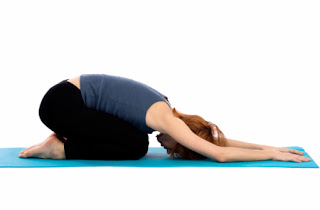By Faye Martins
Everyone
wants their children to be happy and healthy; it’s a parent’s top desire and
researchers now show this can be done through yoga training. Yoga has been used
for centuries to help people find their center and to calm themselves.
Yoga
has actually been known to increase the overall quality of life. Professionals
are now realizing that this type of deep relaxation is an untapped resource and
it can be a powerful tool for children. Typically, yoga has been something that
has been enjoyed by adults, but now the benefits of using it for those of
school ages are becoming apparent. It is during the formative years that yoga has
shown to have the best benefits. Its benefits build self-awareness and also allows children to strengthen their bodies and develop their minds. Although not thoroughly noted,
children experience just as much stress and aggravation in their daily lives as adults do.
Children
are mostly interested in having a good time and playing. Fun and games is what
it is all about. While instructing adult classes in Hatha yoga is more serious
in nature, children learn and relax best through fun mental and physical exercises. For a child
their mental alertness is key and this form of recreation is something
that they can utilize both in school and at home.
Parents
that have put their children into yoga classes have found that their
children’s self-discipline levels increase as well as their ability to calm
themselves in stressful situations. The benefits seem from practicing yoga can
also be observed through other sports, like martial arts. Parents with children
who are easily stressed and require high maintenance are finding that by enrolling them
in yoga classes reduces a parent's stress load.
Yoga training is a practice that must be observed on a constant basis to be of value. Some
find that doing a short yoga session, with the children before school, will help to release
tensions, anxieties, and mental fog from the night before.
Children will learn to calmly inhale and exhale during hectic times, which allows them to lower their stress levels. Children learn valuable stress and anxiety reducing skills that can be utilized all through life. Yoga
doesn’t have to demand a long period of time, just 15-20 minutes is all it
takes to reduce stress and induce happiness.
One
of the biggest hurdles for children during their formative years is trouble getting to sleep. This can be anything from worrying about bedwetting to anxiety at night due to the
darkness. Yoga can release the anxieties and allow for a peaceful night’s
sleep. A child that has less stress is happier and healthier.
©
Copyright – Aura Wellness Center – Publications Division
To see find out
more about yoga or to see our selection of affordable courses, including our
online hatha yoga teacher training intensive courses, please use the yoga
resources on the right side of this page.
If you are
a teacher, yoga studio manager, blogger, e-zine, or website publisher, and are
in need of quality content, please feel free to use my blog entries (articles).
Please be sure to reprint each article, as is. Namaste!









